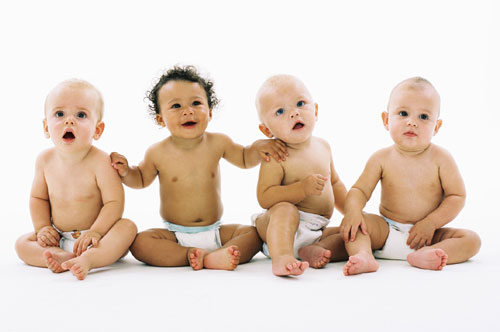
Infancy is the time when lots of problems can go unnoticed due to the developmental changes happening in the child. Often the most ignored and missed problems are those of the eyes. Fortunately eye problems in infants are few. It has been recorded that only 13% of infants are shown to an eye care professional. The eyes’ development begins two weeks after conception. The major eye parts develop within the next month and then continue to mature till the end of pregnancy. The eyes are particularly sensitive to the condition of the mother, in cases where the mother suffers German measles; the fetus does show damaged or malformed eyes.
Conjunctivitis
Some babies develop eye infections such as conjunctivitis. Conjunctivitis is an inflammation of the conjunctiva. This disorder usually affects both the eyes at the same time. It usually starts with one eye and then spreads to the other. If the infant has poor immune defenses, the chances of contracting conjunctivitis are higher and hence the frequency of babies developing this disorder are high. The symptoms that are seen are the infected eyes become puffy and red. There is a sticky or watery discharge; sometimes the discharge can be pus-like too. The eyelids can also be swollen, making it difficult for the infant to open the eyes.
Amblyopia
Amblyopia is a condition noted by reduced vision which cannot be corrected by glasses or contact lenses. It can be caused by anything that interferes with clear vision between birth to 6years of age. It is necessary to treat this symptom at an early age, as with time it worsens and may lead to permanent blindness. The most common cause is strabismus or blockage of one eye
Treatment:
Treatment involves wearing specially designed glasses, using eye-drops and sometimes certain vision therapy helps cure the problem. It is important to cover the eye with some protective patching during the time of healing.
Strabismus
Misalignment of eyes is called strabismus commonly called as squint. The eyes point to different directions. It is very common in infants and young children. Strabismus occurs due to problems with the eye muscles, nerves or the brain
Strabismus is classified based on the direction of misalignment. If one eye points are inwards towards the nose, it is called esotropia, while if the eye points away from the nose, it is called exotropia. Esotropia is the most common and is usually hereditary and the infant develops within first three months of life.
Treatment
Treatment varies based on the type of strabismus. The basic goal is to preserve or restore the visual function as much as possible. Surgery is an option to tighten the eye muscles. Protective shield over good eyes is put to make the infant use the weaker eye constantly and help in strengthening the muscles.
Cataracts
Just like the lens of the camera, the eyes too have lens which are crystal clear. Babies born with lens that show cloudiness will have impaired eyesight. This is known as Cataract. This can cause blindness if gone undetected. If the cataract is very severe, the lens will appear to be white in color. Surgical procedures are required to remove the cataract within 3 months of age in severe cases
Some infants are born with cataracts while others develop it in the first few months or years. Many a times the causes are unknown. Some are inherited and others could be due to metabolic or systemic disorders. In worst cases, the eyes show impairment even after early surgery and visual rehabilitation.
Treatment:
Cataract treatment is done in three important parts:
- Preoperative: The first step is the evaluation of the eyes, it concerns the health of the infant and if there are any associated abnormalities. In some cases an ultrasound is done to check the image of the eyes.
- Operative: Cataract surgery for infants is done under general anesthesia, the infant is kept overnight under observation. Eyes drops are administered to fasten the healing process. The infant has to abstain from rubbing the eyes and from exposure to water. The operator eye is covered with a protective shield until the eye heals completely
- Rehabilitation: Visual Rehabilitation takes place with replacement of the lens and restoration of vision. The lens is replaced with spectacles, contact lens, Intra-ocular lens implants. In case of Intra-ocular lens, it is done during surgery itself. The type of aid is based on the age of the infant and the type of cataract.
Refractive errors
Refractive errors are problems that are caused due to the way the lens and cornea focus light on the retina. This leads to blurry vision and the lack of focusing ability of the eye. This is common in adults and children. It can be cured by using specially designed glasses and getting an eye surgery done. There are various types of refractive errors such as myopia (4% babies suffer from it), hyperopia (20% babies suffer this disorder), astigmatism (occurs in 10% babies).




